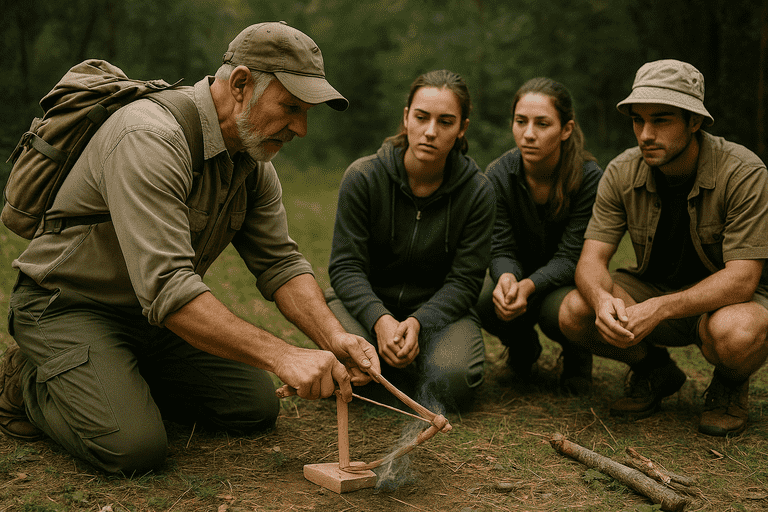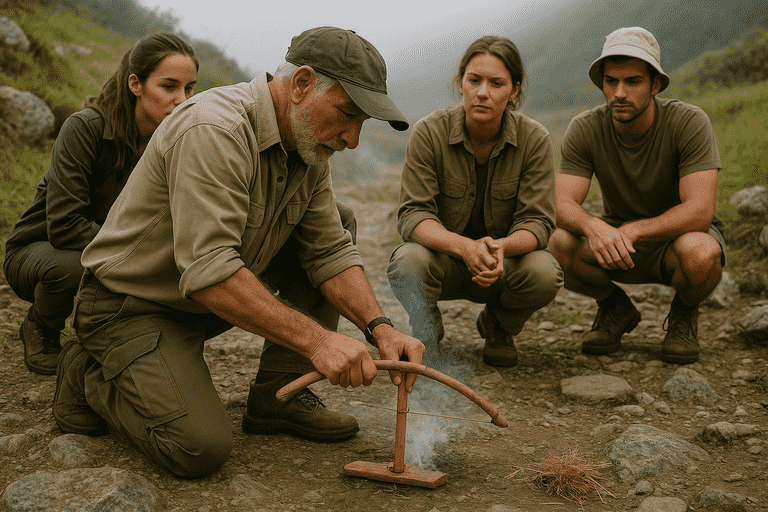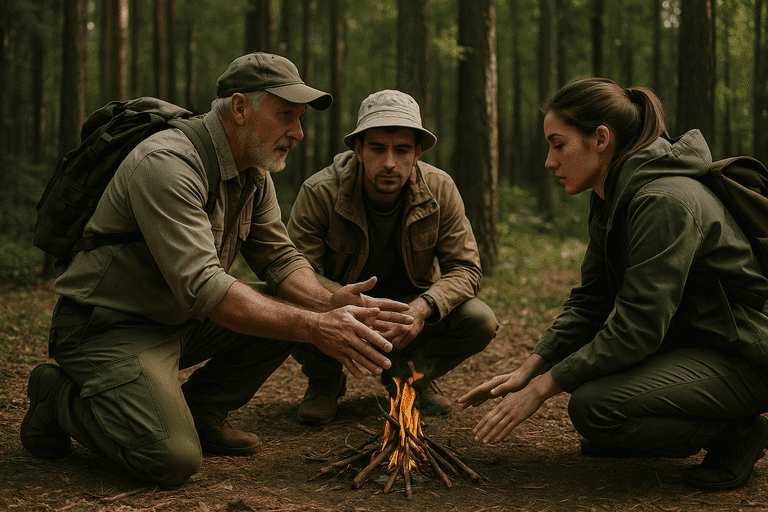In a world increasingly dominated by technology and comfort, many people find themselves disconnected from the natural world. Wilderness survival classes offer a way to restore that connection. For instance, participants learn how to build shelter, make fire, purify water, and navigate using natural indicators. These are not just recreational skills—they are vital for anyone who steps outside the grid.
In addition, the global rise in natural disasters and unpredictable weather patterns makes self-reliance more important than ever. Therefore, understanding how to handle yourself in nature has transformed from niche interest to necessary knowledge.
What to Expect in Wilderness Survival Classes
Attending wilderness survival classes means diving into a hands-on learning environment where theory and practice merge. For example, you won’t just read about making a fire—you’ll actually do it using friction techniques like bow drills or ferro rods. Shelter building isn’t just discussed; it’s executed using materials found around you.
Bushcraft Classes: Rediscovering Nature Skills
In addition, classes often cover navigation, signaling for rescue, first aid, and food procurement. Many courses also teach psychological resilience, which is essential when facing high-stress outdoor scenarios. Therefore, these classes prepare you both mentally and physically to handle emergencies in nature.

For All Skill Levels
One of the biggest myths is that wilderness survival classes are only for expert hikers or hardcore adventurers. However, many schools offer courses tailored to beginners, families, or even corporate teams. For instance, a one-day course might cover basic shelter construction and fire safety, while a week-long immersion could involve primitive toolmaking and overnight stays in self-built camps.
In addition, these classes build confidence regardless of your background. Whether you’re a city dweller with no camping experience or a seasoned backpacker looking to refine your skills, there’s a course for you. Therefore, everyone can benefit from structured survival education.
How Wilderness Survival Classes Promote Environmental Awareness
Learning survival skills in the wild naturally fosters a deeper appreciation for nature. In wilderness survival classes, instructors often emphasize Leave No Trace ethics, sustainable foraging, and respectful interaction with wildlife. For instance, knowing how to identify edible plants also teaches which ones are endangered or ecosystem-critical.
Why Wilderness Survival Skills Training Matters More Than Ever
Moreover, many programs integrate environmental education into their curriculum. In addition, students often leave these classes not only more skilled—but also more committed to conservation and stewardship. Therefore, the impact of learning to survive in the wild often goes beyond personal empowerment and contributes to environmental protection.

The Mental and Physical Benefits
Besides practical knowledge, wilderness survival classes improve mental toughness and physical resilience. For instance, building a shelter during rain or starting a fire under stress strengthens problem-solving and decision-making abilities. In addition, being outdoors for extended periods naturally lowers cortisol, improves sleep, and boosts mood.
Therefore, these classes can have a therapeutic effect. They disconnect you from daily distractions and reconnect you to your body, your breath, and your surroundings. Moreover, overcoming outdoor challenges enhances self-esteem and helps develop a calm, focused mind.
Finding the Right Wilderness Survival Program for You
With the growing popularity of wilderness survival classes, choosing the right course can feel overwhelming. However, several factors can guide your decision. First, determine your goals—are you seeking basic survival knowledge, a test of endurance, or a family-friendly weekend adventure?
In addition, research the instructors’ backgrounds. For instance, many programs are led by former military personnel, wilderness EMTs, or indigenous survival experts. Reviews, course outlines, and location-specific skills (such as desert survival vs. alpine survival) should all factor into your choice. Therefore, picking the right class ensures a safe, educational, and rewarding experience.
What Gear to Bring to Wilderness Survival Classes
While many programs provide essential tools, participants are usually required to bring their own gear. A typical packing list for wilderness survival classes includes a fixed-blade knife, water container, headlamp, notebook, and appropriate clothing. For instance, moisture-wicking layers, durable boots, and a weatherproof jacket are common must-haves.
Wilderness Cabin Dells: Your Perfect Retreat
In addition, bringing your own gear allows you to practice with tools you’ll actually use in real situations. Therefore, you become more familiar with your setup and better prepared to adapt it in the future. However, always follow your instructor’s list carefully to avoid overpacking or missing essentials.

Integrating Survival Skills Into Daily Life
After completing wilderness survival classes, many people experience a shift in how they live day-to-day. For instance, you may begin carrying a basic EDC (Everyday Carry) kit, planning meals with shelf-stable ingredients, or building an emergency bag for your car. These are not signs of paranoia—they’re smart habits.
In addition, graduates often report increased confidence and reduced anxiety in uncertain situations. The ability to rely on your own skills is deeply empowering. Therefore, survival knowledge doesn’t just prepare you for the wild—it helps you feel more grounded in everyday life, too.
Common Misconceptions About Wilderness Survival Classes
Some people hesitate to sign up for wilderness survival classes due to common misconceptions. For instance, they might believe these classes are too extreme, dangerous, or only for people training for apocalypse scenarios. However, most programs are well-structured, safety-focused, and designed for ordinary individuals.
In addition, there’s a myth that survival skills are outdated or irrelevant. But in reality, they offer practical solutions in modern emergencies—from natural disasters to power outages. Therefore, learning survival isn’t about fear—it’s about readiness, resilience, and reconnecting with essential life skills.
Expanding Your Learning After Wilderness Survival Classes
Completing one of the many excellent wilderness survival classes is often just the beginning of a larger journey. Many participants go on to explore related disciplines like bushcraft, tracking, herbal medicine, and homesteading. For instance, learning how to build primitive tools or make cordage deepens your practical understanding.
In addition, joining a local survival or outdoor community keeps your skills fresh and allows you to continue learning from others. Therefore, investing in these classes often opens doors to a lifelong passion for self-reliance and wilderness living.

